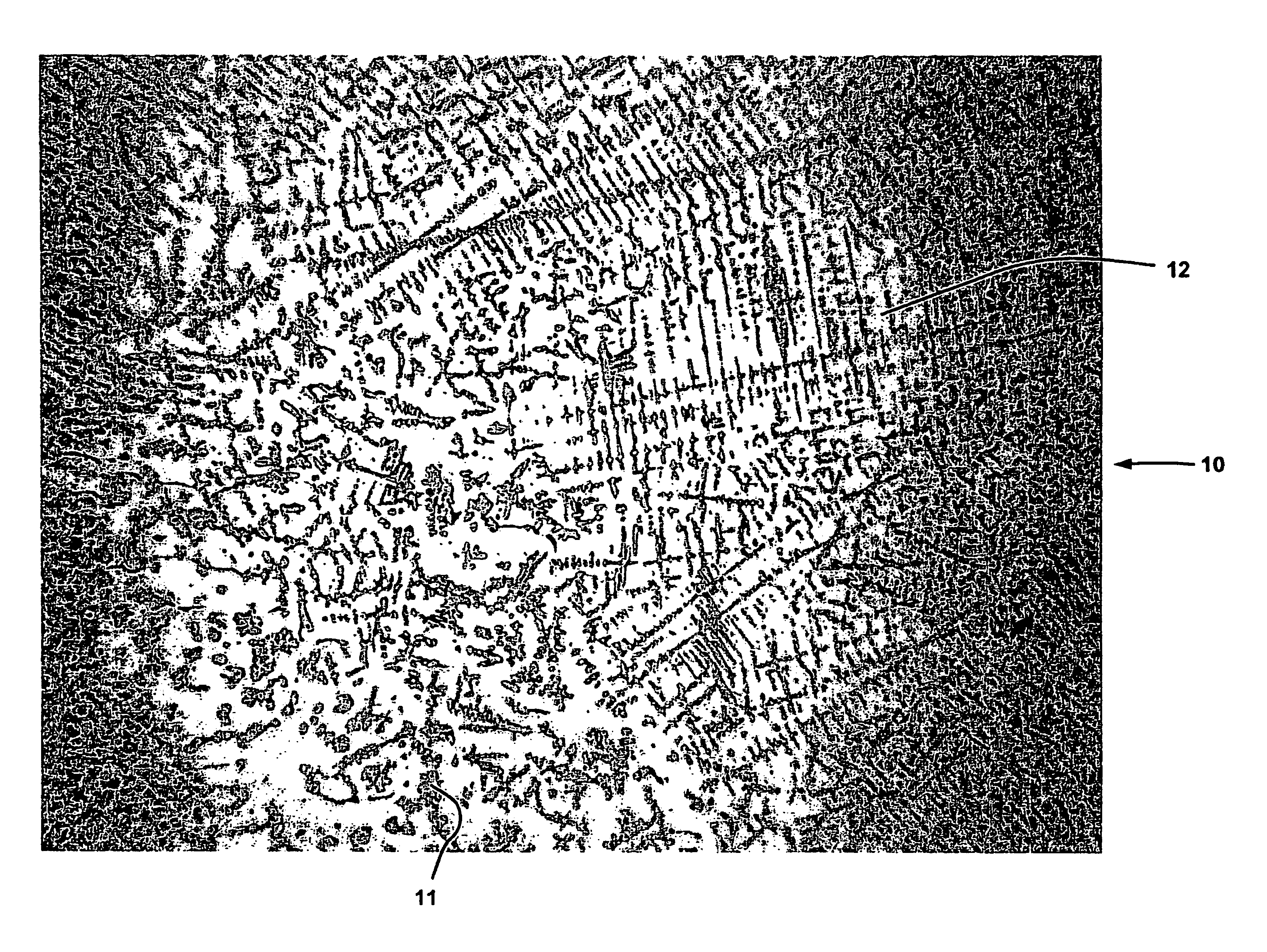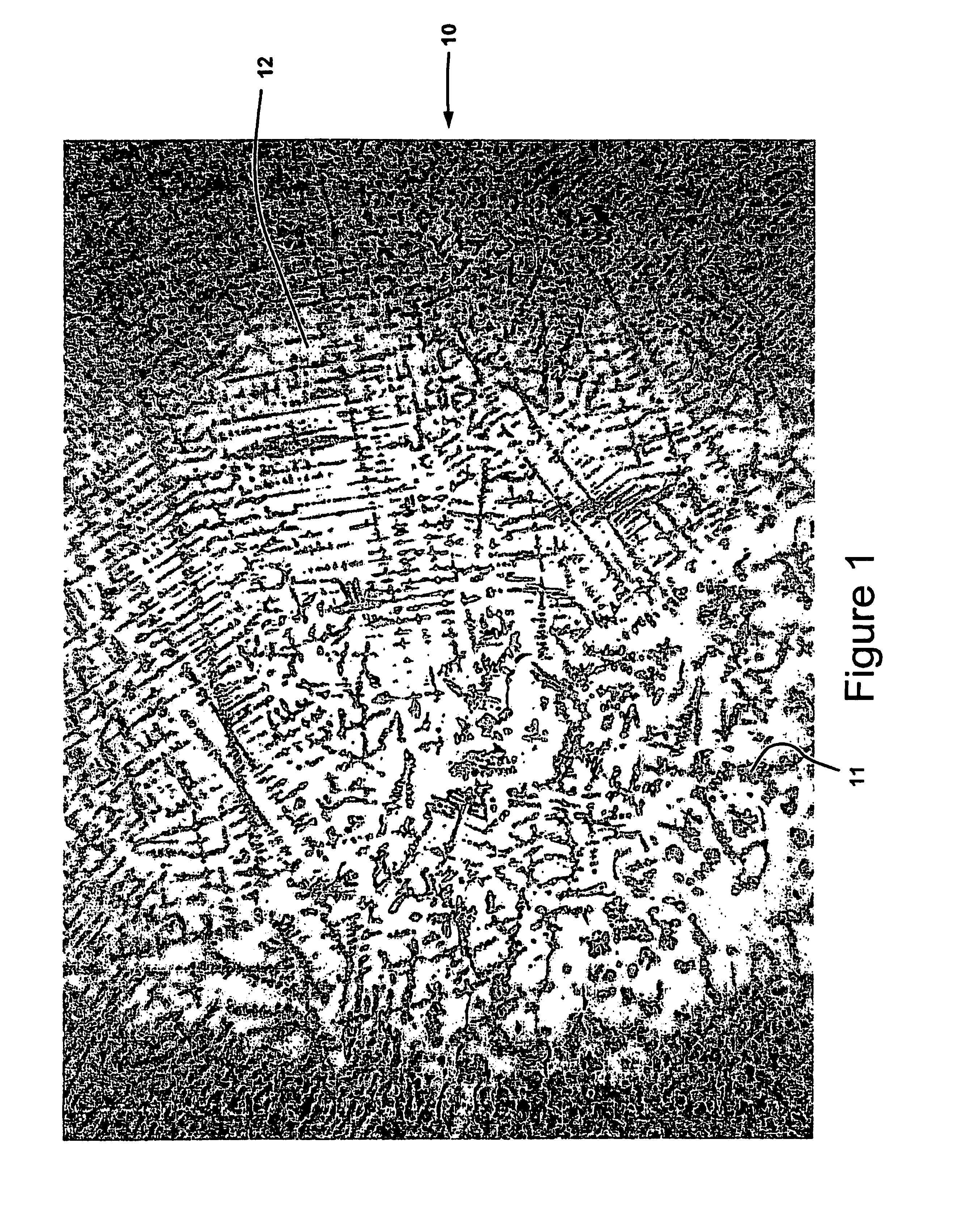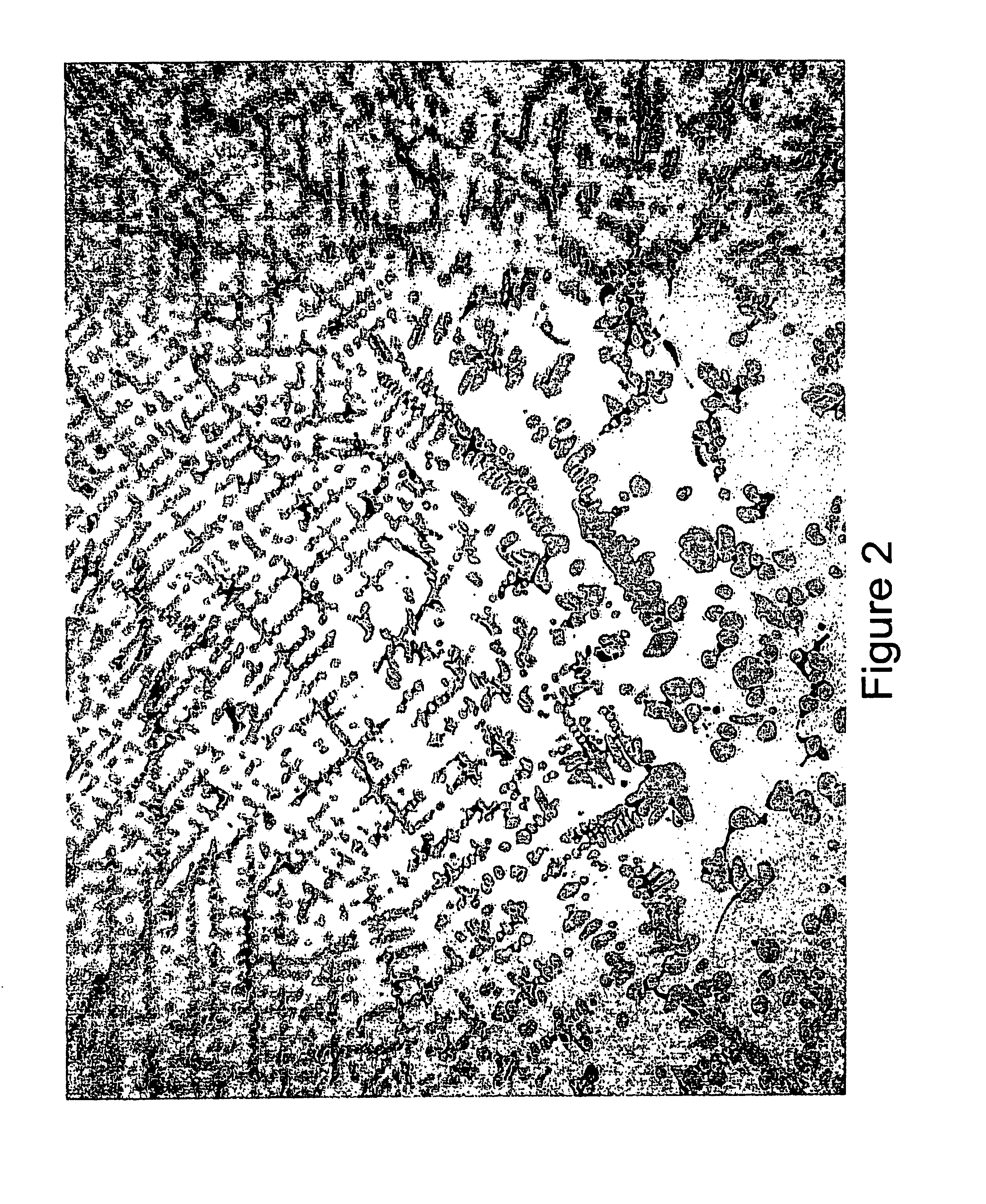Method for producing metal fibers
a metal fiber and metal fiber technology, applied in metal-working equipment, foundry patterns, metal-working moulds, etc., can solve the problems of increased manufacturing costs, inability to use in a wide range of commercially, and higher processing costs than other methods of producing tantalum powder
- Summary
- Abstract
- Description
- Claims
- Application Information
AI Technical Summary
Problems solved by technology
Method used
Image
Examples
example 1
[0048]A mixture of 50 wt % niobium and 50 wt % copper was melted to form a button, cooled and rolled into the form of a plate. The resulting plate was chopped or sheared to short lengths and etched with a mineral acid to remove the copper from the niobium metal fiber. The resulting mixture was filtered to remove the metal fibers from the mineral acid.
example 2
[0049]A mixture of 5 wt % niobium and 95 wt % copper was melted to form a button, cooled and rolled into the form of a plate. The resulting plate was chopped or sheared to about 1 inch squares and etched with a mineral acid to remove the copper from the niobium metal fibers. The resulting mixture was filtered to remove the fibers from the mineral acid.
example 3
[0050]A mixture of 15 wt % niobium and 85 wt % copper was melted to form a button, cooled and rolled into the form of a plate. The resulting plate was chopped or sheared to about 1 inch squares and etched with a mineral acid to remove the copper from the niobium. The resulting mixture was filtered to remove the fibers from the mineral acid. SEM of niobium metal fibers produced in the example are shown in FIGS. 5A-5H.
PUM
| Property | Measurement | Unit |
|---|---|---|
| diameter | aaaaa | aaaaa |
| thickness | aaaaa | aaaaa |
| diameter | aaaaa | aaaaa |
Abstract
Description
Claims
Application Information
 Login to View More
Login to View More - R&D
- Intellectual Property
- Life Sciences
- Materials
- Tech Scout
- Unparalleled Data Quality
- Higher Quality Content
- 60% Fewer Hallucinations
Browse by: Latest US Patents, China's latest patents, Technical Efficacy Thesaurus, Application Domain, Technology Topic, Popular Technical Reports.
© 2025 PatSnap. All rights reserved.Legal|Privacy policy|Modern Slavery Act Transparency Statement|Sitemap|About US| Contact US: help@patsnap.com



